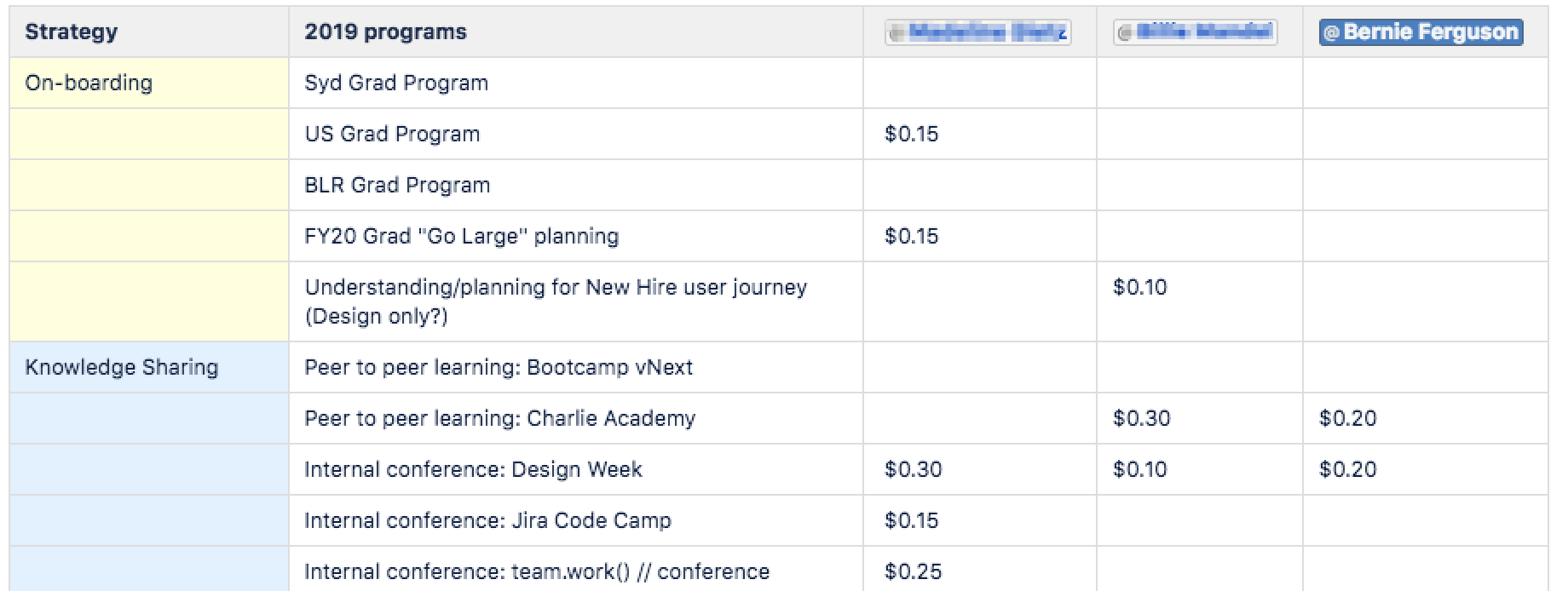The simplest prioritization tip money can buy
You can bet your bottom dollar on this quirky, clever technique.
Every time I get into a serious discussion about prioritization with the teams I coach, there’s a moment where someone does a big exhale (the kind where your cheeks puff out) and says “Let’s face it. We’re trying to do way too much and we’re kidding ourselves if we think we can do it at high quality.” And every time, they’re right.
There is massive pressure to deliver more, more, and still more. Everything feels urgent. Everything seems important. But the reality is that, without ruthless prioritization, we can deliver a lot… of crap.
Let’s assume you’re nodding your head in agreement right now. (You are, aren’t you?) The next question is where to cut back, the very thought of which likely fills you with dread. Prioritization is hard work. Or so I used to think until I discovered this simple, quirky, yet very effective technique.
For every job that must be done, there is an element of fun. You find the fun, and SNAP. The job’s a game!
Mary Poppins
You can use this method on your own to prioritize your work or even tasks in your personal life. Or you can do it as a team to prioritize your backlog, projects, etc. for a given time period.
Introducing the $1 prioritization game
You get a dollar, I get a dollar, everyone playing gets a dollar. Not hard currency, though. Just imaginary. That dollar represents our total bandwidth, which has to be spread “spent” across all the things we could choose to work on.
Step 1
Write down all the things on your backlog. Then add all your business-as-usual things like recurring meetings, reviewing your peers’ work, or keeping stakeholders updated. No “hidden work”! Bring it all to the surface.
Step 2
Group your list into categories so it’s easier to mentally parse. For example, the software teams I coach usually categorize by feature or epic, with a separate category for on-going work like improving the build pipeline and paying down technical debt. A marketing team, on the other hand, might categorize by campaign or initiative.
Here is my team’s list. Note how we make it a table. That way, we can add columns to the right for each team member, which comes into play in the next step.

Step 3
Spend your dollar! Each person looks through the list and distributes the 100 cents according to which tasks or projects they think are most valuable. $0.40 on technical debt or $0.35 on that new billboard campaign, etc.
Step 4
Discuss. Look at where you agree vs. where you diverge, and ultimately come to a decision about what you’ll go after with gusto and what you’ll set aside for now. Expect to spend a good 30 min talking through this. (I said the technique was “simple” – not “easy” 😉)
Prioritization tips and anti-patterns
✅ Establish a time frame for your prioritization. I like to do this exercise one quarter at a time. Other people prefer month by month, or even 6-month time horizons. Any way you go, it’s loads easier to think in terms of “not right now” instead of “not ever”.
✅ Clarify ownership, roles, and responsibilities. When you do this exercise as a team you can’t help steer the conversation towards who’s-doing-what, especially if your team is one where people usually work on projects in parallel. You may find it helpful to run a roles & responsibilities exercise after you discuss your initial dollar allocations!
❌ Spending in tiny increments. If you’re spending less than $0.20 on an activity, do you really believe it’s adding value? And beware of spreading yourself too thin because you’re getting pressure from above to do more or just can’t fathom letting things go. Look at your low-spend items and consider whether you’ll be able to put in the effort to really do them well.
❌ Spending more than $1.00. Just couldn’t cut the list down far enough, eh? No worries. We’ve all been there. Instead of cutting out things that really do need to happen (or, accepting that you’ll do them half-assed), acknowledge where you are and try to find the best way forward. Is there an adjacent team that might be able to help? Could you bring in a contractor? You might also consult with your department head – maybe the due dates on some items are more flexible than you imagined.
Ready to take your prioritization game to the next level? Try this multi-team exercise.
Special thanks to Sarah Goff-Dupont for her contribution to this article.











































